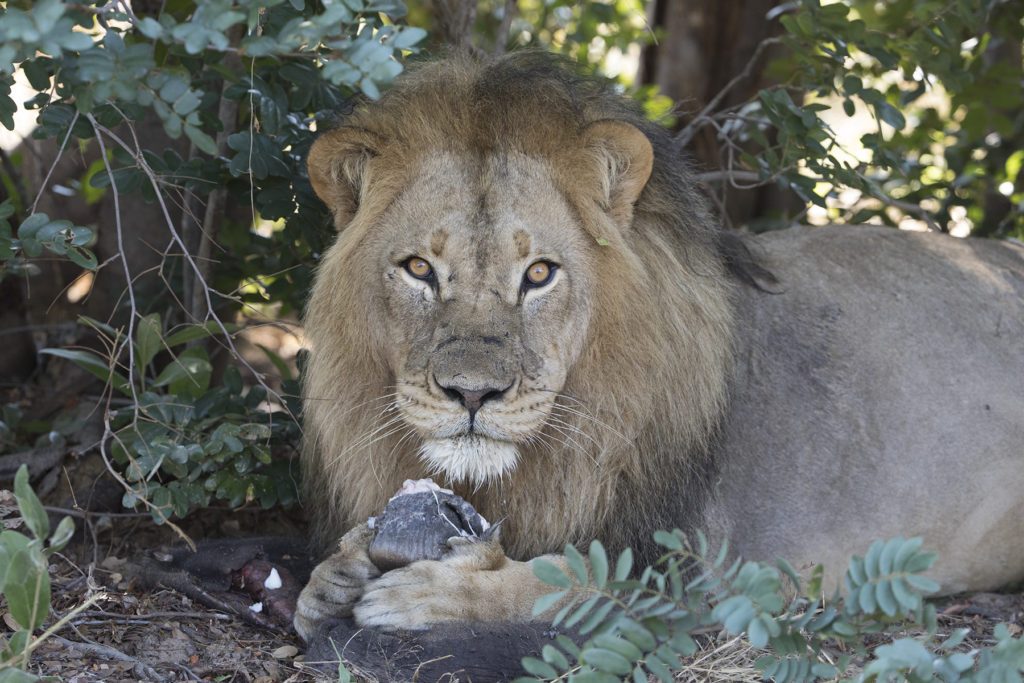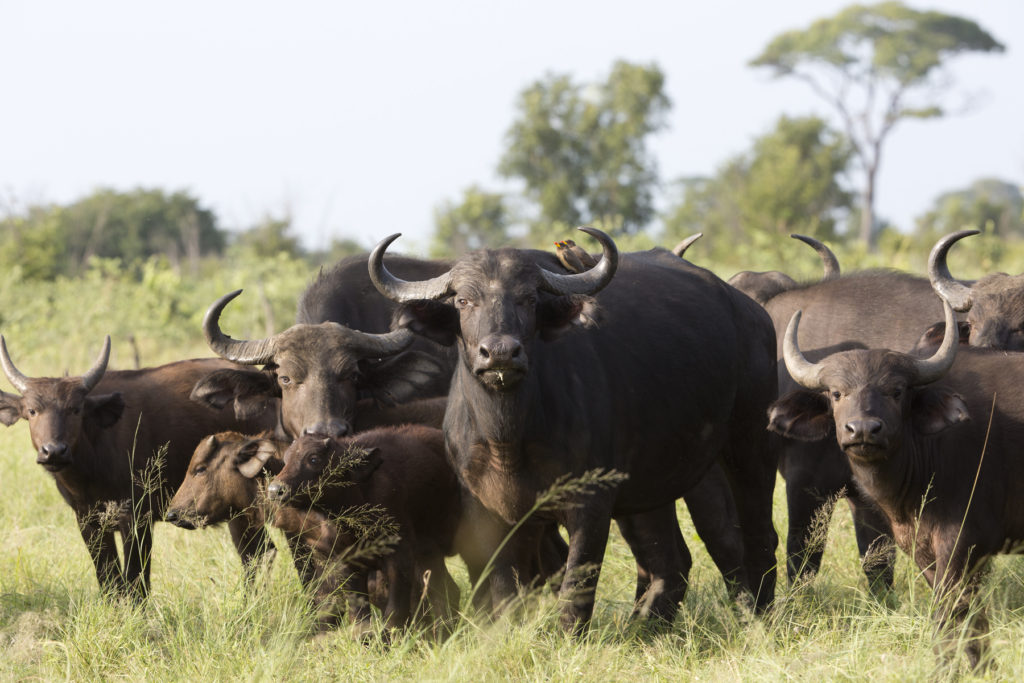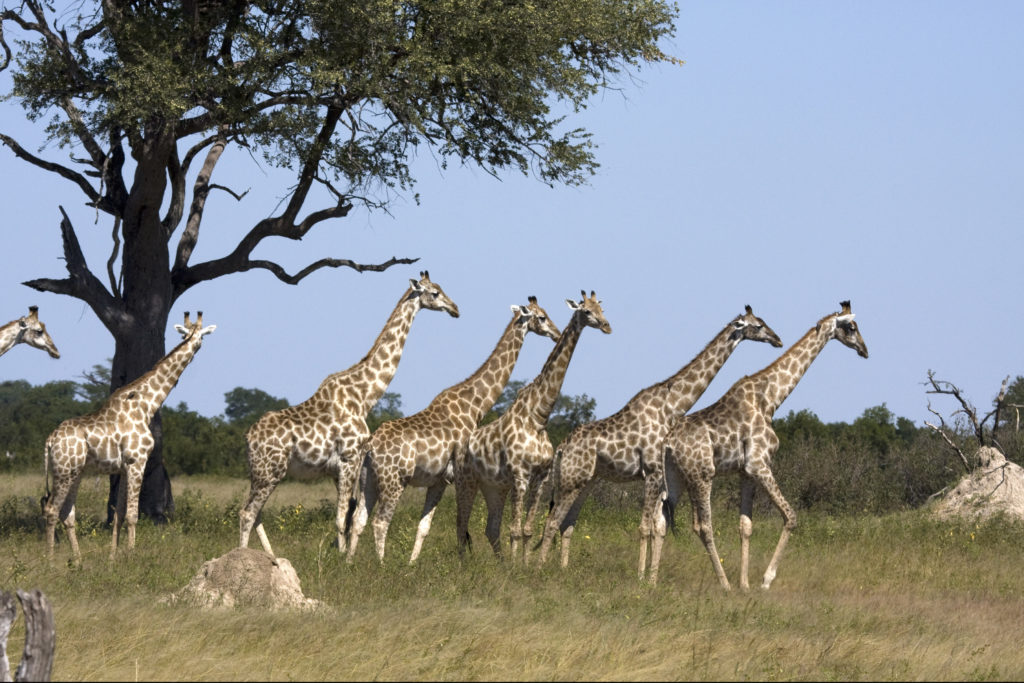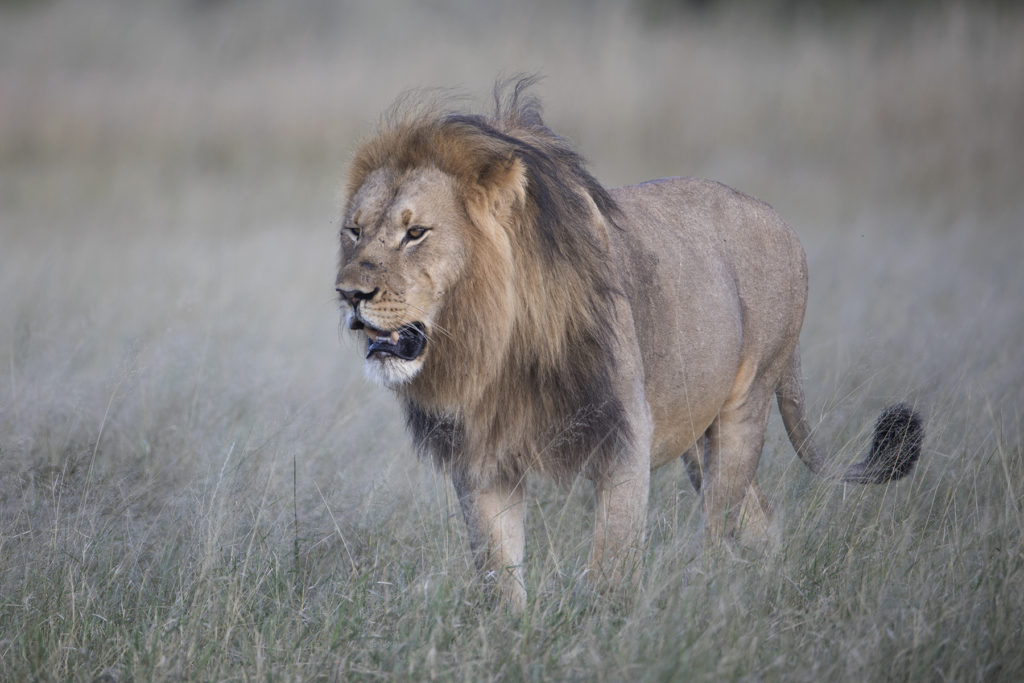Having completed this year’s Tour de Hwange fund-raising ride held over Easter, six of us took the opportunity to have a couple of nights camping down at Kennedy One afterwards. Our stay at Robins Camp had been excellent and it was uplifting to see what has been done to revamp the whole complex. Leaving Robins, we travelled through the park, stopping at most of the water points along the way. The top end of the park had had some late rain so a few of the natural pans still held water. Dwarf Goose Pan was particularly picturesque with purple blooms on the waterlilies and several species of water birds going serenely about their daily business. All the pumped pans we visited were looking wonderful, and due to the presence of decent levels of permanent water, the bird life around Guvalala in particular has improved dramatically.

Getting down to Kennedy One in the late afternoon, we made a quick visit to the pan before setting up camp. A delightful small herd of elephants with young were down in the water having an evening drink. After a quiet night, we packed up brunch and headed on down to Kennedy Two and Ngweshla for a fantastic day of wildlife sightings. While having coffee at K2 and watching a solitary Red-Billed Teal swim around the pan, we got word that two male lions, Humba and Netsayi, were up in the tree line behind us, busily finishing off their kill from the night before – a baby elephant. We managed to get within a few metres of them and while Humba gnawed on a foot, Netsayi lay flat out, bloated stomach bulging. We continued on down to Ngweshla where we enjoyed a sumptuous cook up before taking a spin around the 5-mile drive.

Two hippos wallowed in the pan next to the camp and the usual large crowd of noisy Blacksmith Lapwings littered the edges. The vlei was full of game, first up an entertaining family herd of elephants that plodded into the natural pan to drink and splosh. Stopping to admire a herd of five eland before they made a dash for the tree line, we could see six giraffes, a sounder of warthogs, a lovely waterbuck ram, two small herds of zebra, a lone wildebeest, a 23-strong bachelor group of impala, strutting and sparring, while a pair of Kori Bustards strode about in the grass endlessly gleaning tid-bits. Getting back to Kennedy Two, we found the vlei and pan teeming with a lovely herd of 300 buffalo, some with very young calves afoot. A couple of times elephant strode through the melee, giving the buffalo a dusty shake of their heads and a threatening flap of their ears and trunks to clear the way. Once again, we got close to Humba and Netsayi, who had moved closer to the edge of the tree line. Netsayi was still unable to move too far without having to flop down for a rest, but Humba stood proud, showing marginal interest in the mass of meat milling in the vlei. By late afternoon, the buffalo had largely moved back into the trees and both lions sauntered down to the pan for a drink, taking an age to slake their thirst. And so, we left them there at golden hour to be admired by several truckloads of tourists while we returned to K1.

Overnight we heard lions calling and around midnight, a noisy and alarming ruckus erupted from the baboon troop that was roosting in the trees close to camp, so we knew that something was afoot. It was evident next day from the spoor along the road almost up to the gate of the picnic site that the cats had walked very close to where we were all camped! Heading out for an early morning drive and taking one of the loop roads across the vlei, we came across a delightful neck of giraffe – fourteen of them – all with heads down, feeding on the new leaves of the Blue bush (Diospyros lycioides), and an attendant herd of zebra alongside. At K2, we were delighted to see that a whole bunch of Red-Billed Teal had arrived to accompany the solitary fellow from the day before. We had a spectacular sight of a fairly large brown raptor that was continuously buzzing a Secretary Bird. The large wing span of the Secretary Bord flapped wildly and it looked as if it was trying to peck at the pesky nuisance swooping and diving down at speed. After much consultation with bird books and a birding app, we came to the conclusion that it could only have been a juvenile Pallid Harrier. As it lost interest in the Secretary Bird, a couple of Blacksmith Lapwings decided they’d get in on the action and started buzzing the harrier which eventually took off into the distance. Travelling on to Ngweshla, we came across Humba and Netsayi right on the side of the road, resting up. Humba showed quite a bit of interest in us but Netsayi did not move from his prone position

We had heard that several of Cecil the Lion’s fully grown female offspring had been seen on the loop behind Ngweshla camp site early that morning, so we trundled off to find them, four beautiful lionesses with five darling cubs resting near a small waterhole under a wild gardenia bush (Gardenia spatulifolia). The cubs were all quite young, two of them very small and spotty and we only caught a glimpse of them as they scampered up a bushed anthill and disappeared from sight. On our way back to K1, we took the first forest loop hoping to find the Racket-Tailed Rollers, but alas, although we thought we heard them, they failed to make an appearance.
After packing up at K1, we headed back to Main Camp for a final night in the lodges. We did a short drive in the evening to Nyamandhlovu Pan for an obligatory sundowner and found several waterbuck, impala, zebra and wildebeest cavorting around in the grass. We delighted in a Blacksmith Lapwing fussing over two cute, fluffy chicks and spotted a group of five Fulvous Whistling Duck standing on one of the sand spits.
How privileged we feel to have the opportunity to enjoy this special park. Wild places and all the creatures in them should be recognized as the priceless treasures they are, their protection as a global responsibility.
Jenny Brebner and Paula Dell. Images David Dell
